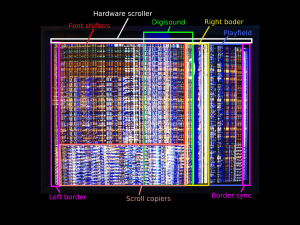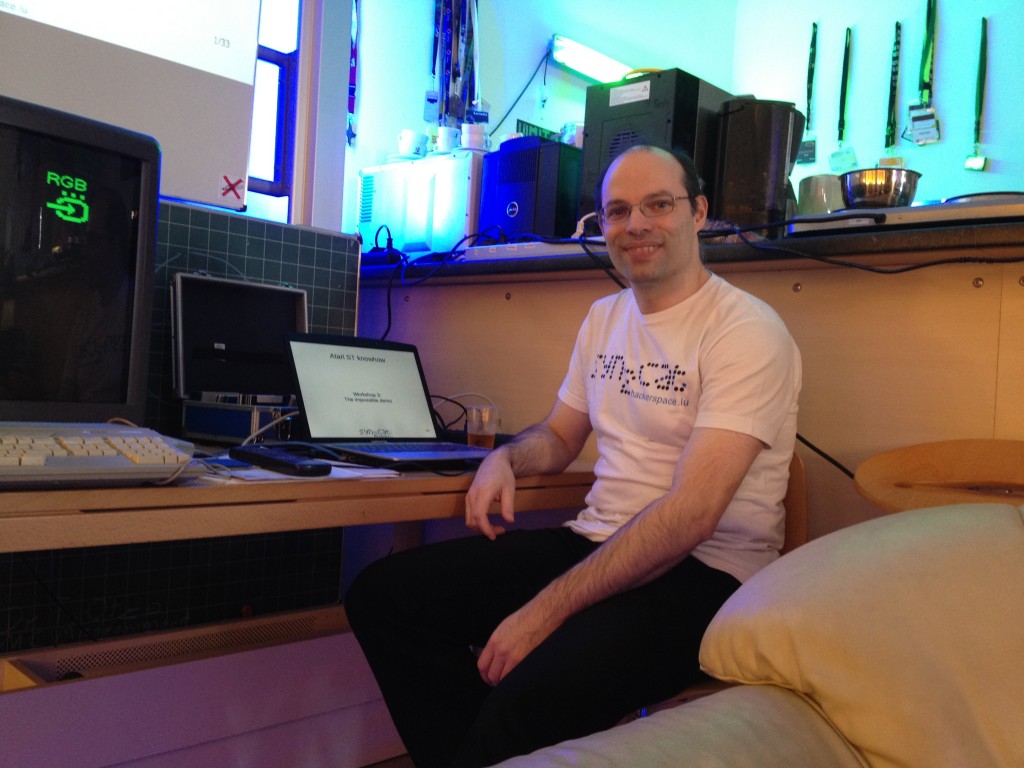From the oppression of overscan and its liberation to the wide Parallax Distorter, the attendees of the AtariST workshop were impressed that the Atari was– and still is– amazing!
We, the younger generation that has not come into contact with computers like the Atari or Amiga, travelled back in time to the 80’s and were taught by a master of Atari know-how.
The first time when you see animations on the AtariST you think of the mathematical equations that do the mazes and magic on the TV screen in the Chill, but while getting deeper into the workshop, you’ll become more and more astonished about how much work and effort goes into such a an animation. And above all how little space all this needs!
A few 100kB and it already does a a lot– of course with sound!
The overscan has long been one of my favorite topics, because as a kid I asked myself why there needed to be a black border around video games and movies. Now I have an answer to my question, plus a solution.
The third workshop was about the Parallax Distorter… that rocks the bits and bytes of your mind! Most of the folks watching the talk were thinking, “Okay. Gunstick, my dear friend, STOP, rewind, PLAY again!”
The first time when you see something like this code structure or hear the way they– AtariST animations developers– needed to think in order to hack their way around the limitations, you definitely need it explained a second time. After you think that you understood it, you’re still far away from realizing such a demo.
Of course this should NOT frighten you in any way and prevent you from participating, because it truly is something very new, but it teaches you a lot of things: using resources with care; rethinking a concept not once; not twice, but four times; using school as a place to prepare your projects; and that good ol’ plain paper sheets have still not lost their importance in taking notes or brainstorming.
Now, as I prepare myself for the next AtariST WS by studying the last Impress presentation again, I will let you have a look at this:
Some said the Atari ST could not:
- show 500 colors at once
- play digital samples
- have a resolution higher than 320×200
- move the whole screen contents
- accomplish bitwise shifting
and gunstick said, “Yes it can!”
The holy grail of programming: synchronous code
— by gunstick

